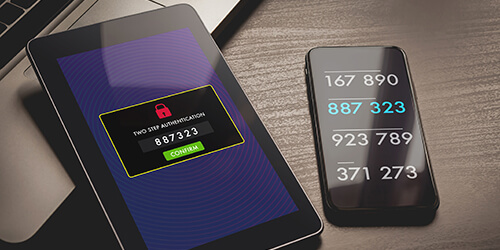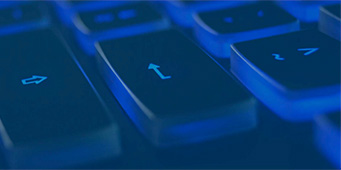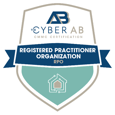Multi Factor Authentication Management
Passwords alone are not enough to stop cyberattacks. Multi factor authentication (MFA) uses additional verification channels to ensure only the right users have access to your critical systems. But properly implementing MFA — from documentation and training to onboarding and help desk support — requires time and resources your IT team may not be able to spare.
Ntiva can help. Our managed services are a cost-saving, effective way to enhance your cybersecurity with MFA protection.
How Ntiva Supports IT Teams With MFA
Ntiva offers a wide range of services to support MFA implementation. We’ll support your IT team throughout the process of planning and execution to help your organization ensure only your users have access to your critical systems.
Here are some of the services we offer.
Ntiva will help you evaluate, purchase, and install the MFA software you need to help protect your organization. We’ll help you determine what the best options are for your budget and needs. And we’ll manage the whole process for you from end-to-end.
If your users aren’t accustomed to MFA, they may have questions about how to use it. Our managed IT help desk support services ensure your entire organization has access to support 24/7/365.
If your end users have trouble installing or using MFA, they may need a little extra help. Ntiva remote support technology services include software installation, advanced troubleshooting, repairs of applications, and more to help keep your staff up and running.
When new software or processes are implemented, there may be times when on-site IT solutions are requested or required. Ntiva will send a technician to your site for any problems we can’t solve remotely.
MFA is one component of an effective cybersecurity plan. Ntiva provides managed security services that give your organization access to sophisticated, 24/7 protection from digital threats and cyberattacks.
What Types of Multi Factor Authentication Solutions Can Ntiva Manage?
One of the great things about MFA is that you have options for which channels you use. Ntiva will help you determine which ones are right for your organization and then provide managed services to support the solution.
Here are a few of the verification methods you might consider.

Phone Callbacks
For less tech savvy users, this can be a great option. Phone callbacks allow for authentication simply by answering the phone and pressing any key to complete the login process.
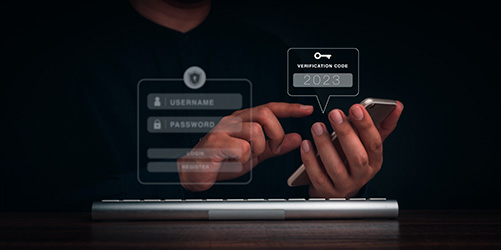
SMS Passcodes
SMS passcodes use your end users’ cell phones to verify their identity. They’ll receive a code by SMS that they can enter into the login prompt to continue.
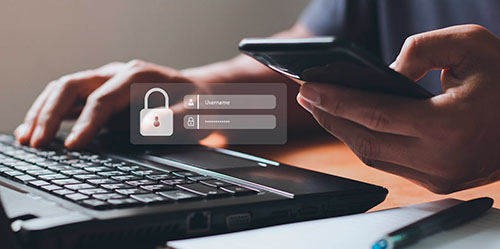
App Verification
Some MFA programs use an app users can download onto their phone. During the login process, end users will receive a push notification to verify their identity.
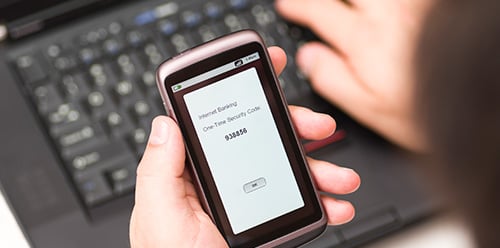
Time-Based One-Time Passcodes
Similar to app verification, time-based one-time passcodes use an authentication app on your end users’ phones. When they try to access your systems, a code will appear in the app that the user will enter into the login prompt.

Bypass Codes
For one-and-done MFA, bypass codes can be useful to provide single event access for your contractors or other short-term employees. They can also be useful for securing lost devices.
Does My Business Need Multi Factor Authentication?
MFA is an important piece of the cybersecurity puzzle. Without it, it is much easier for cyberattackers to impersonate your users and gain access to your critical systems. MFA adds an additional security step that can’t be easily cracked, unlike password protection. No wonder Wired magazine calls it the “single most important step you can take” to protect user accounts.
Stronger Security
Even long and complicated passwords can be cracked by cyberattackers. The best way to defend your systems is to add a stronger layer of protection.
Protect High-Risk Accounts
Cyberattackers like to target the end users who have the greatest access to your systems. These high-risk accounts are better protected with MFA in place.
Secure Data and Resources
Your organization likely has a treasure trove of sensitive data and resources. Before you grant access to someone, shouldn’t you have a way to verify their identity?
Painless Protection
If your security methods are difficult for users to implement, they probably aren’t going to do it. MFA is simple and easy, ensuring widespread adoption.
How Does Ntiva Deliver MFA Support and Solutions?
The managed services Ntiva provides are tailored to the needs of your business. Our goal is to offer a solution that meets you right where you are. Multi factor authentication support is just one aspect of the comprehensive IT services we provide to our clients.
Here’s how we deliver:
We’ll Guide You Through the MSP Onboarding Process
At Ntiva, we believe the best support experiences are built on a solid foundation. We provide a thorough onboarding process to ensure you know exactly what you’re getting and how the services work.
Phase 1: Managed Service Definition
The definition of services is a crucial part of the onboarding process. Whether you need help with an MFA implementation or a full suite of support services, this stage is where we’ll discuss every service outlined in the signed Service Agreement. This ensures our team has an in-depth understanding of your business prior to on-site data gathering, process documentation, and ongoing support.
Phase 2: IT Data Collection
Before we implement MFA within your organization, our technicians will visit your site to gather information about your IT environment and begin the documentation process. Their extensive engineering checklist covers such things as network investigation, security assessment, backup verification, server room inspections, and policy documentation.
Phase 3: Internal Information Review
The primary goal of this phase is to ensure your IT environment will meet your needs now and as your business grows. We review the information collected in Phase 2 with your dedicated team alongside our specialized senior technicians if needed.
Phase 4: Orientation Meeting and Service Handoff
Your Ntiva team meets with you to review your new client manual. This review includes a discussion of all findings, including recommendations for additional changes. It also includes the final tailoring of support procedures if needed. We schedule any recurring on-site visits and set up the cadence for recurring meetings between you and your account manager.
Your Dedicated Security Support Team
As cyberattacks grow more sophisticated, it takes a dedicated team of experts to keep them from penetrating your defenses. Ntiva’s team includes the best in the business, resolved to provide you with the support you need to keep your systems safe.

Dr. Jerry Craig
Senior Director of Security/CISO

Scott L.
Professional Services

Sung K.
System Engineer

Frank D.
Solution Architect

Holly B.
Project Manager

Jake K.
Service Desk
How Does Multi Factor Authentication Work?
Multi factor authentication uses a secondary verification channel to confirm the identity of your users. This process means that even if a cyberattacker were able to compromise an end user’s password, they would still be unable to access your systems. It’s a simple but very effective way to improve your security posture.
What Are Examples of Multi Factor Authentication?
Some examples of multi factor authentication might include:
- Requiring a user to enter a passcode they receive on their personal phone
- Using time-sensitive, one-time use codes to grant a user access to your sensitive systems
- Using an app and push notifications as a means of confirming identity
- Phone callbacks that call a user to provide a code for authentication purposes
What Is Two-Factor Authentication?
“Two-factor authentication” refers to any verification protocol that requires users to confirm their identities in two different ways. For example, at login, a user might both enter a password and receive a code on their personal cell phone, which would then be entered into a prompt. Both the password and code would be considered a “factor” of authentication. Two-factor authentication is one of the most commonly practiced approaches to MFA for digital security.


